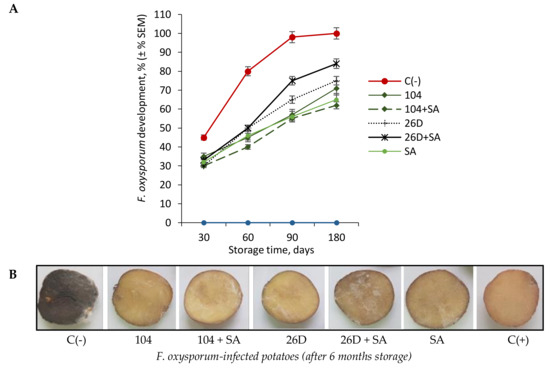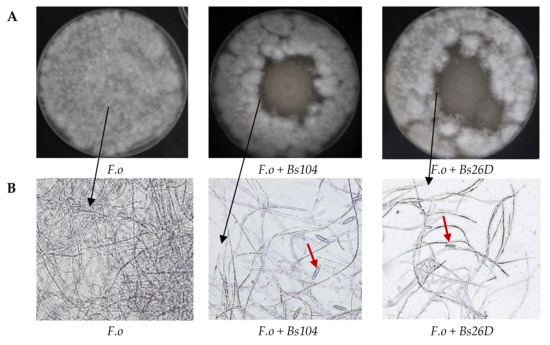Potato (Solanum tuberosum L.) is a valuable food crop with great importance in ensuring food security worldwide. One of the most acute problems of modern agriculture and food industry is the loss of potato tubers (about 40-60% of the total harvest) during storage from diseases. Beneficial antagonistic bacteria Bacillus subtilis, generally recognized as safe microorganisms (GRAS) to use in the food industry, are considered a bio‐active and eco‐friendly agent for controlling postharvest decays of potato. Of special interests are endophytic B. subtilis, living inside plant tissues, which allows them to be less dependent on external environmental factors (compared to rhizosphere and phyllosphere strains) while exhibiting "useful" features. Due to it is difficult to select an individual effective microbial strain with a broad spectrum of activity against a range of pathogens an interest is co-application of B. subtilis with other methods (biological, physical) in an integrated vision of disease management. In this study, the effect of endophytic B. subtilis (strains 10‐4, 26D) and their compositions with salicylic acid (SA) on some resistance and quality traits of stored potatoes infected with Fusarium oxysporum-caused dry rot were studied. The results that are presented here establish that the treatment of potato tubers immediately before storage with endophytic bacteria B. subtilis (10‐4, 26D) individually and in combinations with SA reduced the incidence of F. oxysporum‐mediated dry rot (up to 50%) in potatoes during long‐term storage, with the highest protective effect upon application of composition B. subtilis 10‐4 + SA.
- Endophytic Bacillus subtilis
- Salicylic Acid
- Postharvest Dacays of Potato
- Resistance
- Biotechnology
1. Supression of F. Oxysporum Development in Stored Potato Tubers by Endophytic B. Subtilis (10-4, 26D) and B. Subtilis (10-4, 26D) + SA
Supression of F. Oxysporum Development in Stored Potato Tubers by Endophytic B. Subtilis (10-4, 26D) and B. Subtilis (10-4, 26D) + SA
F. oxysporum
Fusarium
Figure 1A,B). The bacterization of tubers immediately before storage with pre-established [1] concentrations of
B. subtilis
F. oxysporum
F. oxysporum
+

Figure 1.
B. subtilis
B. subtilis
B. subtilis
B. subtilis
F. oxysporum
A
F. oxysporum
B. subtilis
B
F. oxysporum
F. oxysporum
B. subtilis
F. oxysporum
B. subtilis
F. oxysporum
B. subtilis
B. subtilis
F. oxysporum
B. subtilis
F. oxysporum and treated with SA; C(+)—positive control tubers without infection and treatments.
2. Vitro Studies
In vitro studies also showed that
B. subtilis
F. oxysporum
F. oxysporum
F. oxysporum


Figure 2.
B. subtilis
Bs104
B. subtilis
Bs26D
F. oxysporum
F.o
A
visualizations
F. oxysporum
B. subtilis
B
F.o
F. oxysporum
Bs
B. subtilis
F. oxysporum
